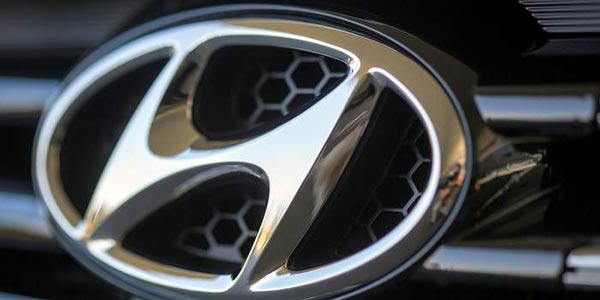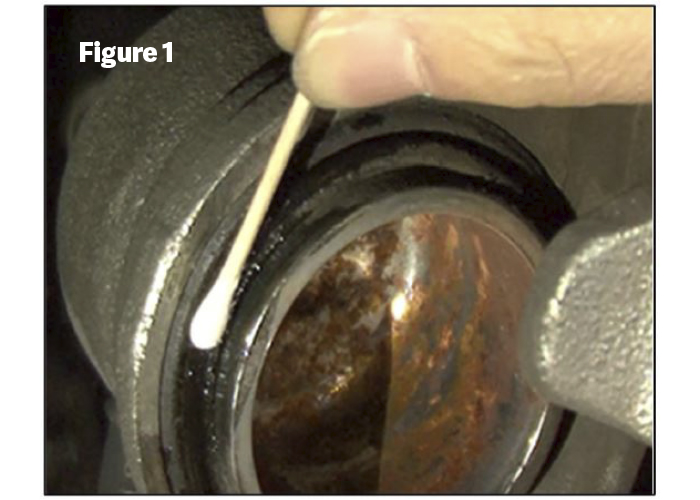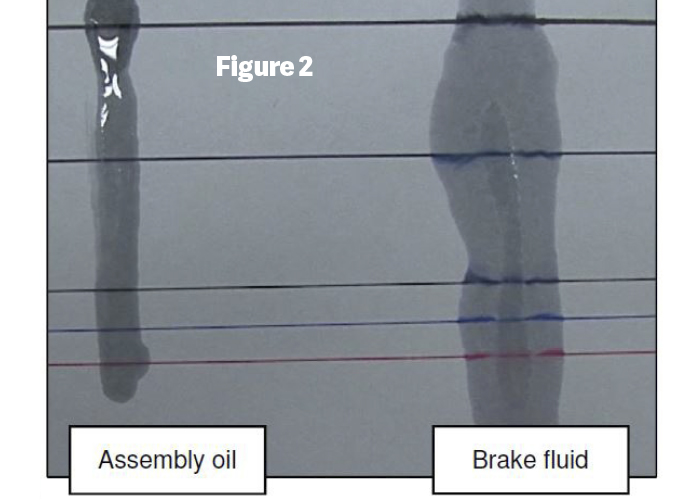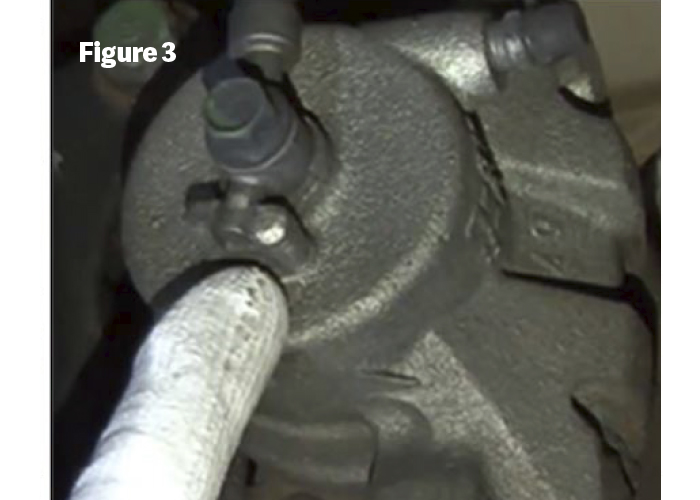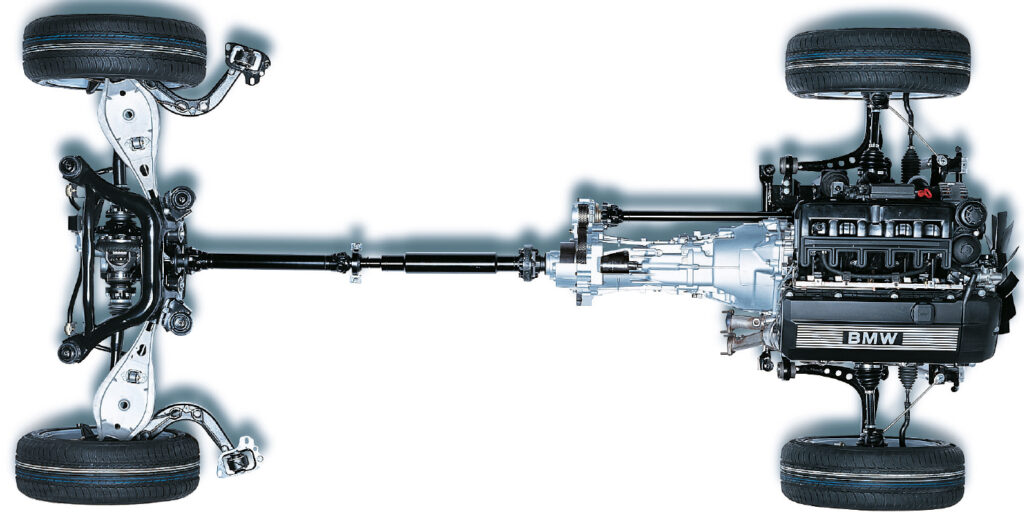All Models
This bulletin describes the procedure to inspect and identify fluid which may appear around the brake caliper area. If fluid appears around the brake caliper piston area, test the fluid to identify whether the fluid is brake fluid or assembly oil, per the service procedures below.
1. If oil/fluid is present on the brake caliper piston area, test the fluid to determine if it is brake fluid or assembly oil. Use a cotton swab to carefully collect a sample of the fluid (Figure 1). Do not disturb the caliper boot.
2. Using an oil or water based ink pen, draw several horizontal lines on a sheet of paper. Wipe the collected fluid vertically down the ink lines (Figure 2).
- If the ink does not smear, the fluid is not brake fluid and is likely to be assembly oil.
- Wipe the excess oil from the caliper using a clean shop towel. Do not disturb the caliper boot.
- If the ink runs/smears, the fluid is likely to be brake fluid.
- Continue to investigate and repair the source of the brake fluid.
NOTICE: If a fluid leak is found at the banjo bolt area between the brake line and the caliper (Figure 3), replace the copper washers of the banjo fitting. Follow the applicable service manual procedures to replace the washers, bleed the brake system, and inspect for brake fluid leaks.

